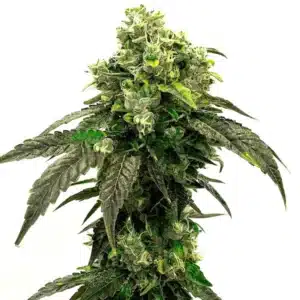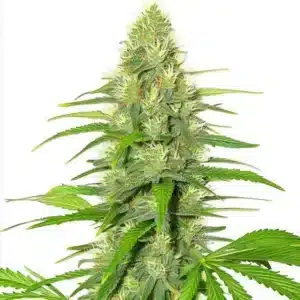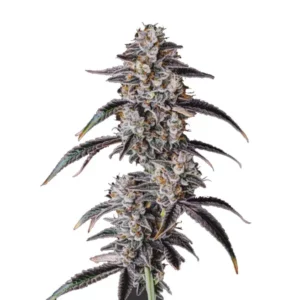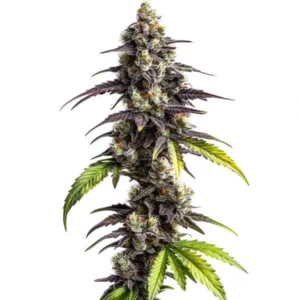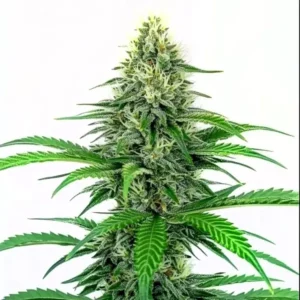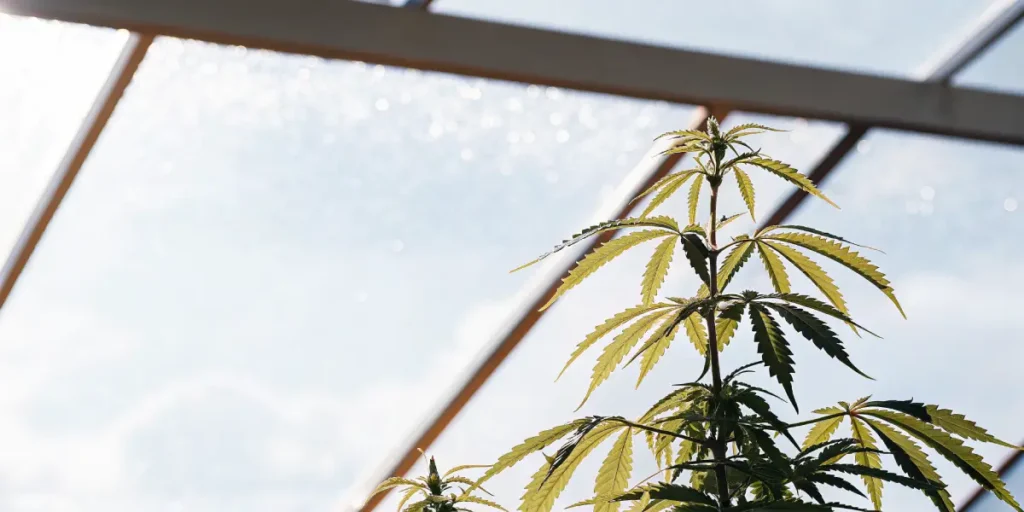
Stress Response and Latex in Cannabis Plants
Cannabis plants have evolved unique mechanisms to cope with stress. One fascinating aspect is their ability to produce latex, a milky fluid that plays a crucial role in their stress response. When environmental pressures such as pests or extreme temperatures occur, cannabis plants tap into their stress response mechanisms to enhance latex production. This process serves as a protective barrier, deterring pests and sealing wounds.
Experienced growers have noticed that stress response and latex in cannabis plants are intricately linked. For instance, when a cannabis plant is exposed to drought conditions, its latex production often increases. This is not merely a coincidence; it’s a survival strategy. By producing more latex, the plant can better retain moisture and prevent further damage.
Recommended Strains
Hindu Kush
|
|
THC | 15% - 19% (Medium) |
|
|
Type | Feminized |
|
|
Yield | High |
|
|
Phenotype | 45% Indica / 55% Sativa |
White Widow
|
|
THC | 18% - 25% (Medium) |
|
|
Type | Feminized |
|
|
Yield | High |
|
|
Phenotype | 45% Indica / 55% Sativa |
For those new to growing cannabis, it might be surprising to learn how resilient these plants can be. Stress-induced latex changes in cannabis plants are an indicator of how they adapt to their surroundings. By observing these changes, growers can make informed decisions about their cultivation practices, ensuring the health and vitality of their crops.
Environmental Stress and Latex Production
The impact of environmental stress on cannabis latex is significant. Factors such as temperature fluctuations, humidity levels, and soil conditions can all trigger a stress response in cannabis plants. When these stresses occur, the plant’s natural defense mechanisms kick in, often resulting in increased latex production.
Consider the case of a grower cultivating cannabis in a region with unpredictable weather patterns. During a particularly hot spell, the plants might exhibit signs of stress, such as wilting. In response, the plants increase their latex production, creating a protective layer that helps them cope with the heat. This is a clear example of how stress response and latex in cannabis plants are interconnected.
Moreover, environmental stressors can have a lasting effect on the plant’s ability to thrive. As cannabis plants continue to face stress, their latex production becomes a critical factor in their survival. This not only helps in immediate stress alleviation but also in building long-term resilience against future stressors, making the plants hardier over time.
The significance of stress response mechanisms in cannabis plants extends beyond immediate survival. The capacity to increase latex production in response to environmental stress allows plants to maintain their health and productivity. As growers understand the impact of environmental stress on cannabis latex, they can employ cultivation strategies that promote plant resilience and vigor.
Practical Tips for Managing Stress in Cannabis Cultivation
To minimize stress and enhance latex production, growers should focus on maintaining stable growing conditions. Regular monitoring of temperature and humidity can prevent sudden stress responses. Using mulch can help retain soil moisture, particularly during dry spells.
Choosing resilient cannabis strains is another effective strategy. For instance, Hindu Kush from Blimburn Seeds is known for its hardiness. It’s well-suited for environments where temperature variations are common, making it a favorite among seasoned growers.
Additionally, integrating organic mulching materials can further support the plant’s stress response mechanisms. By insulating the soil and regulating temperature, mulch creates a more stable microenvironment, reducing the likelihood of stress-induced latex changes in cannabis plants.
Implementing a consistent watering schedule is equally important. Ensuring that plants receive adequate water without over-saturating the soil helps maintain optimal conditions for growth. This balance is vital in supporting the plant’s natural latex production increase in cannabis due to stress, ultimately leading to healthier and more resilient crops.
Promos & Deals
Latex as an Indicator of Plant Health
Cannabis plant latex as a stress indicator is a valuable tool for growers. By observing the consistency and quantity of latex, one can gauge the plant’s overall health. A sudden increase in latex might signal that the plant is under duress, prompting the grower to investigate potential stressors.
For example, if a plant starts producing excessive latex without clear environmental triggers, it could be a sign of pest infestation. In such cases, a close inspection of the plant’s leaves and stems is necessary. Addressing the issue promptly can prevent further damage and ensure the plant’s recovery.
Monitoring cannabis plant latex as a stress indicator allows growers to take a proactive approach in plant care. By identifying stressors early, growers can make adjustments that mitigate negative impacts and promote better overall plant health.
Furthermore, knowing the function of latex production in stress response empowers growers to fine-tune their cultivation techniques. Whether adjusting nutrient delivery or altering environmental conditions, growers who heed these indicators are better equipped to foster robust and healthy plants.
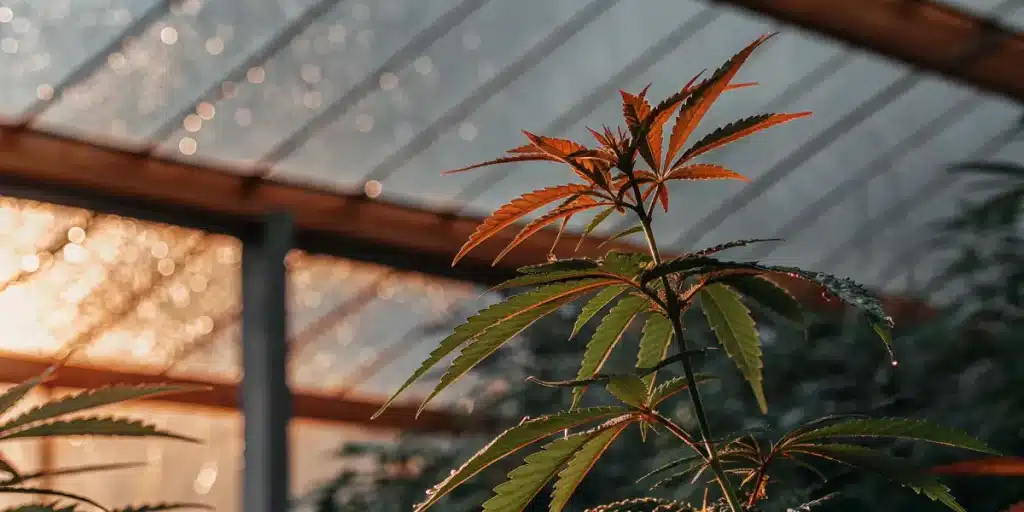
Monitoring and Addressing Stress Indicators
Regular inspections are crucial for catching stress indicators early. Growers should look for changes in latex production, as well as other signs of stress like leaf discoloration or stunted growth. These observations can guide timely interventions.
Invest in tools that help maintain optimal growing conditions. Humidity and temperature sensors are invaluable for preventing stress-induced latex changes in cannabis plants. By keeping these factors in check, growers can create an environment where plants thrive.
Incorporating technology, such as automated systems for environmental control, can significantly enhance the ability to monitor and adjust growing conditions. This proactive approach ensures that stress response mechanisms in cannabis plants are supported consistently.
By leveraging these technological advancements, growers can maintain a stable environment that minimizes the impact of environmental stress on cannabis latex production. This not only improves plant health but also maximizes yield potential over the growing season.
Strain Selection and Stress Management
The choice of cannabis strain plays a pivotal role in stress management and latex production. Some strains are naturally more resistant to environmental stressors, making them ideal for growers in challenging climates. These strains often have a genetic predisposition to handle stress more effectively.
White Widow, available at Blimburn Seeds, is one such strain. Its robust genetics enable it to produce consistent latex levels, even in stressful conditions. This makes it a popular choice for both novice and experienced growers aiming for a resilient crop.
Knowing the genetic traits of different strains can greatly aid growers in selecting the right plants for their specific environmental conditions. This knowledge enables them to choose strains that align with their cultivation goals while supporting stress response and latex in cannabis plants.
By focusing on strains known for their resilience, growers can mitigate the challenges posed by environmental stressors. This strategic approach not only enhances latex production but also contributes to a more efficient and sustainable cultivation process.
Maximizing the Benefits of Resilient Strains
Once a suitable strain is selected, growers should focus on maximizing its inherent strengths. This involves providing adequate nutrients and water, as well as protecting the plants from potential stressors like pests and diseases.
Implementing stress-reducing practices can further enhance latex production. Techniques such as regular pruning and spacing plants adequately can improve air circulation, reducing the likelihood of fungal infections and other stress-related issues.
Utilizing natural pest control methods, such as introducing beneficial insects, can support plants’ stress response mechanisms while minimizing the need for chemical interventions. This approach encourages healthy growth and robust latex production increase in cannabis due to stress.
Additionally, growers should consider employing crop rotation and soil enrichment strategies to maintain nutrient-rich growing conditions. These practices sustain plant health and ensure that the benefits of selecting resilient strains are fully realized throughout the cultivation cycle.
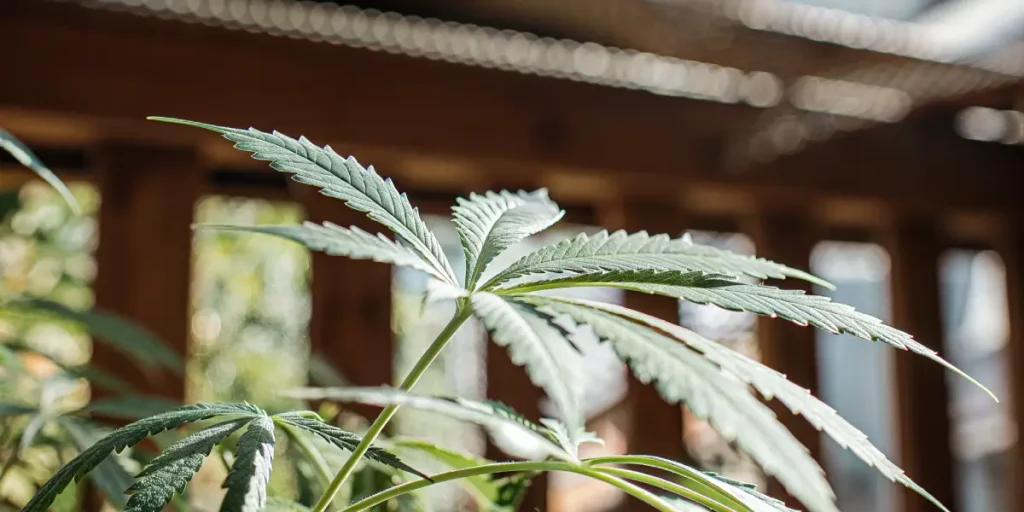
Frequently Asked Questions
How does environmental stress affect cannabis latex production?
Environmental stress can significantly impact latex production in cannabis plants. Stressors such as temperature extremes, humidity fluctuations, and soil deficiencies trigger the plant’s defense mechanisms. This often results in increased latex production as the plant attempts to protect itself from harm.
Growers can observe these changes in latex production as an indication of the plant’s response to its environment. By monitoring these changes, they can adjust growing conditions to mitigate stress and support healthier plant development.
The impact of environmental stress on cannabis latex is not only a reflection of immediate plant needs but also a predictor of future resilience. Knowing these dynamics equips growers with the tools to enhance plant vitality and latex production effectively.
By acknowledging the interconnectedness between stress factors and latex production, growers can fine-tune their cultivation practices to foster healthier and more productive cannabis plants over time.
What are the benefits of increased latex production due to stress?
Increased latex production due to stress offers several benefits to cannabis plants. Primarily, it serves as a physical barrier against pests and pathogens, reducing the likelihood of infestations and infections. Additionally, latex can help seal wounds, preventing further damage and moisture loss.
For growers, this natural response is advantageous as it reduces the need for chemical pesticides and enhances the plant’s resilience. This allows for more sustainable cultivation practices and healthier crops.
Knowing the function of stress-induced latex changes in cannabis plants allows growers to leverage this natural defense mechanism to their advantage. By promoting conditions that support healthy latex production, growers can achieve more robust and resilient plants.
Ultimately, the benefits of increased latex production due to stress extend beyond immediate plant health, contributing to long-term sustainability and productivity in cannabis cultivation.
Can latex production be used as an indicator of plant health?
Yes, latex production can be a useful indicator of plant health. Changes in the quantity or consistency of latex often reflect the plant’s reaction to stressors. An increase in latex might suggest that the plant is under duress, prompting growers to investigate potential issues.
By regularly monitoring latex production, growers can gain insights into the plant’s overall health and make informed decisions about cultivation practices. This proactive approach ensures timely interventions and promotes healthier plants.
Utilizing latex production as a health indicator enables growers to anticipate and address potential stressors before they escalate. This strategy supports the overall well-being of the cannabis plants and enhances their ability to thrive in varying conditions.
Through consistent observation and timely action, growers can harness the insights provided by latex production patterns to optimize their cultivation efforts and ensure successful harvests.
Which cannabis strains are best for stress management?
Several cannabis strains are well-suited for stress management, thanks to their robust genetics. Strains like Hindu Kush, Blue Dream, and White Widow are renowned for their resilience and ability to maintain healthy latex levels even under stress.
These strains are ideal for growers in challenging climates or those seeking to minimize stress-related issues. Selecting a resilient strain is an effective strategy for managing stress and optimizing latex production.
Besides to their inherent resistance to stress, these strains often exhibit superior growth characteristics and yield potential. This makes them a preferred choice for growers looking to optimize their cultivation outcomes in diverse environments.
By selecting strains with proven stress tolerance, growers can focus on refining their cultivation techniques to enhance stress response and latex in cannabis plants, ultimately leading to healthier and more productive crops.
How can growers enhance stress response mechanisms in cannabis plants?
Growers can enhance stress response mechanisms in cannabis plants by creating stable growing conditions. This includes maintaining optimal temperature and humidity levels, providing adequate nutrients, and ensuring proper watering practices.
Additionally, employing stress-reducing techniques such as pruning, spacing plants properly, and using companion planting can further support healthy stress response mechanisms. These practices contribute to improved latex production and overall plant vitality.
Integrating organic soil amendments and fertilizers can improve soil health, providing plants with the essential nutrients needed to fortify their stress response mechanisms. This proactive approach supports robust growth and healthy latex production.
By fostering an environment that naturally supports stress response and latex in cannabis plants, growers can achieve sustainable cultivation practices that yield high-quality and resilient crops.


